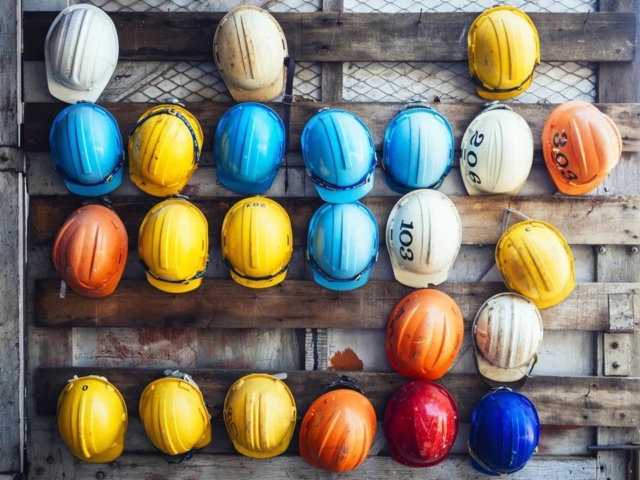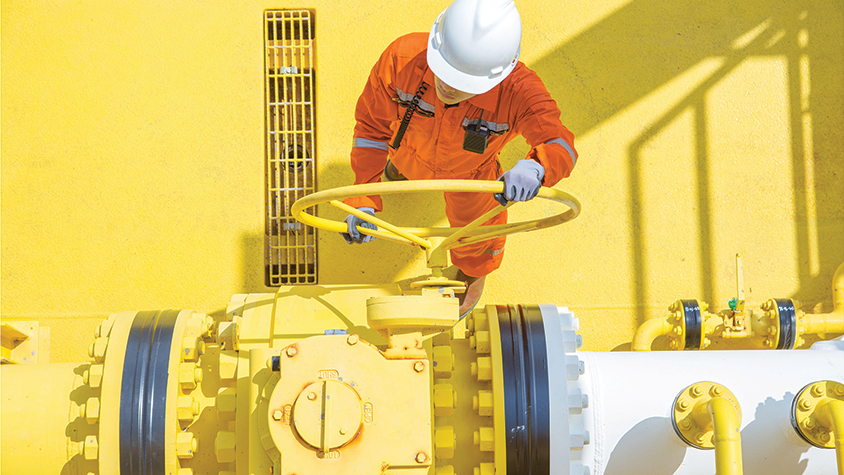Why Health And Safety Is The Foundation Of A Strong Manufacturing Culture

Jul 23, 2025
Last updated on Jul 23, 2025
What if the key to higher productivity and lower costs in your manufacturing plant isn't a new machine, but a new HSE culture mindset? Many leaders see safety as a cost. But top companies know it drives business success. The most successful manufacturers don't just use advanced technology or streamlined processes. They build safety manufacturing practices into how they operate every day.

Key takeaways
- Strong HSE culture drives real business results: higher productivity, better quality, and lower costs.
- Companies with positive safety cultures outperform competitors across all business areas, not just safety.
- Building a safety culture needs visible leadership, measuring your current state, and investing in proper training and systems.
Often called “the way we do things around here,” HSE culture comes from your team’s shared values and behaviors toward safety. A positive health and safety culture in the workplace shows in how people act when no one is watching. It shapes every decision made on the factory floor, from workers to executives.
Why strong HSE culture drives manufacturing success
Manufacturing environments present a perfect storm of safety challenges that directly impact your bottom line. The evidence shows that companies addressing these challenges through strong safety cultures consistently outperform their competitors across every business metric.
It drives productivity and quality
Companies often see safety programs as drains on resources. They focus on productivity and quality instead. The truth is that ignoring safety hurts those very business goals. Studies show that making workplace safety a priority actually boosts productivity and ensures better quality.
The International Association of Oil and Gas Producers notes that companies with strong safety cultures, low incident rates, and low turnover excel in all parts of their business. This link isn’t random. It reflects the careful thinking, systematic processes, and attention to detail that strong safety cultures require. When workers learn to think about risks and follow procedures, this mindset extends to quality control and operations.
| Business Impact Formula: Strong Safety Culture = Higher Productivity + Better Quality + Lower Costs |
Companies with positive safety cultures see real advantages that impact profits: fewer risky behaviors, low incident rates, less employee turnover, lower absenteeism, and higher productivity. These companies know that safety excellence and operational excellence go hand in hand.
It cuts incidents and costs
A weak safety culture has major financial impact that goes far beyond obvious costs. Picture this: a worker uses an unguarded machine, their sleeve gets caught, and they hurt their arm. The financial damage extends well beyond immediate medical costs.
Direct costs include:
- Workers’ compensation claims
- Regulatory fines
- Hiring and training replacement costs
- Equipment repairs
- Lost production time
- Legal fees and court costs
- Higher insurance premiums
Indirect costs damage long-term business health even more:
- Serious harm to company reputation
- Lost time during investigations and cleanup
- Lower employee morale across the organization
- Reduced productivity as workers become cautious or distracted
Research consistently shows that investing in comprehensive safety programs costs far less than dealing with preventable incidents. Each incident creates a chain of expenses that can quickly reach hundreds of thousands of dollars, with effects lasting months or years.
It boosts employee morale and engagement
When leadership shows real commitment to worker well-being, it builds trust that transforms workplace dynamics. This commitment goes beyond providing safety equipment. It means creating an environment where employees feel valued and protected.
A positive safety culture directly links to higher employee morale. Workers who see their employers investing in their safety and health feel more valued and are more likely to be engaged in their work. This engagement leads to better performance, higher quality output, and more innovation as employees feel comfortable suggesting improvements.
Companies with strong safety cultures report much lower employee turnover and absenteeism rates. The stability this creates reduces recruitment and training costs while keeping institutional knowledge. High-performing employees are more likely to stay with companies that show they care about worker well-being.
It ensures more than just compliance
Major industrial disasters weren’t caused by single failures but by systematic cultural weaknesses that allowed multiple barriers to fail at once. The Deepwater Horizon disaster led regulators to conclude that a fundamental transformation of safety culture was necessary for industry survival.
A strong HSE culture moves safety from a box-checking exercise to a core company value. It creates an environment where safety considerations are naturally built into every business decision, from equipment purchases to production scheduling. This integration prevents the dangerous mindset where safety and productivity compete against each other.
Implementing this cultural shift requires effective change control and change management approaches, where HR plays a crucial role in balancing both process improvements and people considerations. Manufacturing leaders need comprehensive step guides for HR to lead change management initiatives that transform safety mindsets across all organizational levels.

Health and safety culture in manufacturing
What are the core safety culture components?
The most successful safety transformations focus on specific, measurable components rather than vague cultural concepts. Research from major incidents and high-performing organizations reveals the essential building blocks. A positive safety culture is built on several key pillars that work together.
- Visible management commitment requires leadership that consistently puts safety before short-term production pressures. This means making decisions that show safety comes first, even when it involves temporary delays or extra costs.
- High levels of employee involvement and open, two-way communication create an environment where workers feel empowered to raise safety concerns and suggest improvements. This involvement extends beyond formal safety meetings to include regular consultation on safety procedures, equipment selection, and workplace design.
- A commitment to ongoing training and open, two-way communication createscreate an environment where workers feel empowered to raise safety concerns and suggest improvements. This involvement extends beyond formal safety meetings to include regular consultation on safety procedures, equipment selection, and workplace design. However, implementing new safety technologies and procedures often faces resistance, making it essential to address employee resistance to new technology through strategic change management approaches.
- A focus on organizational learning rather than blaming individuals creates a “just culture” where people can report errors and near-misses without fear of punishment. This approach recognizes that most errors result from system problems rather than individual failings, leading to more effective prevention strategies. This philosophy distinguishes between honest mistakes and deliberate violations, ensuring learning opportunities aren’t lost to fear while maintaining accountability for reckless behavior.
Your first steps to building a safety culture
Building strong HSE culture requires systematic action across multiple areas, but smart leaders know where to start for maximum impact when building a safety culture.
Step 1: Measure your current safety climate. You cannot improve what you don’t measure. Assess your employees’ attitudes toward health and safety through formal safety climate surveys or informal workforce discussions. This assessment helps identify specific weak areas within your organization’s culture and provides a baseline for measuring progress. Remember that measurement is only valuable when followed by action and feedback to employees about findings and planned improvements.
Step 2: Provide proper training and tools. Safety tools extend far beyond personal protective equipment. They include your company’s safety management systems, policies, procedures, and software solutions that work together to create a safer workplace. Ensure employees receive adequate training to perform their jobs safely and have easy access to training resources and safety information. Successful implementation often requires overcoming employee resistance to new technology and establishing well-defined HR policies that support safety initiatives.
Step 3: Make safety visible and rewarding. Engage employees regularly with health and safety initiatives through simplified procedures, open communication channels, active management participation in safety activities, and recognition of positive safety behaviors. Create multiple touchpoints for safety communication, from formal meetings to informal conversations, and ensure that safety achievements are celebrated as prominently as production milestones. The role of line managers in championing workplace safety is crucial for driving this cultural transformation from the ground up.Understanding the importance of safety culture in the workplace is crucial for manufacturing leaders. Building a strong HSE culture is a long-term commitment that requires sustained effort, but the business returns—higher productivity, lower costs, better quality, and improved employee retention—make it one of the smartest investments manufacturing leaders can make. This cultural transformation often goes hand in hand with broader manufacturing culture change initiatives and requires expert HR consulting services to ensure successful implementation across all organizational levels.

Solve your HR problems!
6th Floor, Star Building, 33 Mac Dinh Chi, Saigon Ward, Ho Chi Minh city, Vietnam




